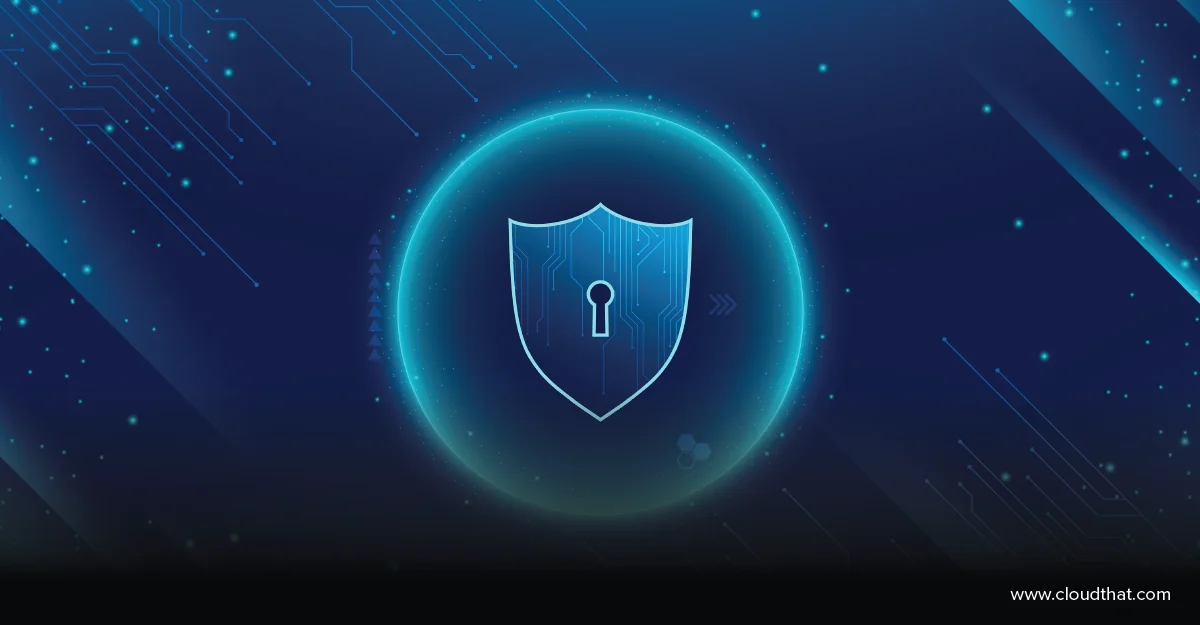|
Voiced by Amazon Polly |
Overview
In today’s digital age, data is one of the most valuable assets. Whether it’s a financial transaction, personal message, or confidential business document, the need to secure information has never been more critical. With the increasing prevalence of cyber threats and data breaches, encryption has become the cornerstone of data security. But what exactly is encryption, and how do ciphers come into play? Let’s explore these fascinating mechanisms that ensure our digital privacy and trust.
Pioneers in Cloud Consulting & Migration Services
- Reduced infrastructural costs
- Accelerated application deployment
Understanding Encryption
Encryption is the process of converting readable data (plaintext) into an unreadable form (ciphertext) using a mathematical algorithm and a key. The main purpose of encryption is to protect data confidentiality and ensure that only authorised individuals can access the original information.
When encrypted data needs to be read, it is converted back to its original form through a process called decryption, which uses a corresponding key. This entire process ensures that even if data is intercepted during transmission, it remains useless without the correct key.
A simple example can help explain this. Suppose you send a message “HELLO” to a friend. If you shift each letter by 2 positions, “HELLO” becomes “JGNNQ.” Without knowing the shift value (the key), it’s not easy for others to make sense of the message. This basic idea forms the foundation of encryption, though modern systems use far more complex mathematical operations.
The Role of Ciphers
A cipher is the algorithm or rule used to perform encryption and decryption. In other words, it’s the method through which the transformation from plaintext to ciphertext takes place. The effectiveness of encryption largely depends on the strength and design of the cipher.
Ciphers have evolved over centuries, from simple manual techniques used by ancient civilizations to advanced computer-based algorithms that secure our online communications today.
Types of Encryption
Encryption can be broadly classified into two main types based on the use of keys:
1. Symmetric Key Encryption
In symmetric encryption, the same key is used for both encryption and decryption. This means that both the sender and the receiver must have access to the same secret key and must keep it confidential.
Examples:
- DES (Data Encryption Standard)
- AES (Advanced Encryption Standard)
- Blowfish
Symmetric encryption is fast and efficient, making it suitable for encrypting large amounts of data. However, the main challenge lies in securely sharing the key between parties.
- Asymmetric Key Encryption
Also known as public-key encryption, this system uses two keys, a public key and a private key. The public key is used for encryption, while the private key is used for decryption. The public key can be shared freely, but the private key must remain secret.
Examples:
- RSA (Rivest-Shamir-Adleman)
- ECC (Elliptic Curve Cryptography)
- DSA (Digital Signature Algorithm)
Asymmetric encryption is more secure for key exchange and authentication, but it can be slower than symmetric encryption.

Common Types of Ciphers
Ciphers have a long and interesting history. Here are some important types that have shaped the evolution of encryption:
- Substitution Cipher
In a substitution cipher, each letter in the plaintext is replaced by another symbol or letter according to a fixed system. The Caesar Cipher, used by Julius Caesar, is one of the earliest examples. It replaces each letter with one that is a certain number of positions down the alphabet.
For instance, with a shift of 3, “HELLO” becomes “KHOOR.” Though simple, this method was quite effective in ancient times.
- Transposition Cipher
Unlike substitution, a transposition cipher rearranges the letters of the plaintext according to a specific pattern. The characters themselves remain unchanged, but their positions are rearranged. For example, if you reverse “HELLO,” you get “OLLEH”, that’s a very basic form of transposition.
- Stream Cipher
A stream cipher encrypts data one bit or byte at a time. It’s often used for real-time data transmission, such as securing voice communications. RC4 was a popular example, though newer stream ciphers have since replaced it due to security flaws.
- Block Cipher
A block cipher, in contrast, encrypts data in fixed-size blocks, such as 64-bit or 128-bit chunks. It takes a block of plaintext and converts it into a block of ciphertext using a key. AES, for example, is a well-known block cipher that has become a global standard.
How Encryption Works in the Real World?
Encryption is deeply integrated into our everyday digital activities, often without us even realising it. Here are a few common examples:
- Online Banking and E-Commerce: When you make payments online, encryption ensures that your financial information remains confidential.
- Messaging Apps: Applications like WhatsApp and Signal utilize end-to-end encryption to safeguard messages, ensuring that only the sender and intended recipient can read them.
- Data Storage: Sensitive files stored on your phone or computer can be encrypted to prevent unauthorised access.
- Email Encryption: Tools like PGP (Pretty Good Privacy) protect the contents of emails from prying eyes.
- Virtual Private Networks (VPNs): VPNs utilize encryption to establish secure tunnels for internet traffic, thereby protecting users from hackers and surveillance.
Modern Encryption Standards
Over the years, several encryption standards have been developed and adopted worldwide. Some of the most widely used include:
- AES (Advanced Encryption Standard): Adopted by the U.S. government, AES is known for its speed and security. It’s used in everything from Wi-Fi encryption (WPA2) to file protection.
- RSA: A cornerstone of public-key encryption, RSA is used in secure web browsing (HTTPS) and digital signatures.
- SHA (Secure Hash Algorithm): While technically a hashing algorithm, SHA plays a key role in digital signatures and data integrity checks.
Modern encryption also combines symmetric and asymmetric methods in what’s known as hybrid encryption. For instance, when you visit an HTTPS website, your browser first uses asymmetric encryption to exchange a secure session key. Then it uses symmetric encryption for the rest of the communication.
Challenges in Encryption
While encryption is powerful, it’s not without challenges:
- Key Management: Safeguarding and distributing encryption keys securely is one of the biggest challenges in cryptography.
- Performance: Complex encryption algorithms can slow down systems, especially when processing large amounts of data.
- Quantum Computing Threat: Future quantum computers could potentially break current encryption systems, prompting research into post-quantum cryptography.
- Legal and Ethical Issues: Some governments argue that strong encryption can hinder law enforcement investigations, sparking debates about the balance between privacy and security.
Conclusion
Encryption and ciphers are the unsung heroes of the digital era. They protect our emails, financial transactions, passwords, and even national security data from falling into the wrong hands. From ancient substitution ciphers to modern AES and RSA algorithms, encryption continues to evolve to meet the demands of an increasingly connected world.
Drop a query if you have any questions regarding Encryption or Ciphers and we will get back to you quickly.
Empowering organizations to become ‘data driven’ enterprises with our Cloud experts.
- Reduced infrastructure costs
- Timely data-driven decisions
About CloudThat
CloudThat is an award-winning company and the first in India to offer cloud training and consulting services worldwide. As a Microsoft Solutions Partner, AWS Advanced Tier Training Partner, and Google Cloud Platform Partner, CloudThat has empowered over 850,000 professionals through 600+ cloud certifications winning global recognition for its training excellence including 20 MCT Trainers in Microsoft’s Global Top 100 and an impressive 12 awards in the last 8 years. CloudThat specializes in Cloud Migration, Data Platforms, DevOps, IoT, and cutting-edge technologies like Gen AI & AI/ML. It has delivered over 500 consulting projects for 250+ organizations in 30+ countries as it continues to empower professionals and enterprises to thrive in the digital-first world.
FAQs
1. What is the main difference between encryption and hashing?
ANS: – Encryption is a reversible process used to protect data confidentiality, meaning encrypted data can be decrypted with the correct key. Hashing, on the other hand, is a one-way process used to verify data integrity, it cannot be reversed to obtain the original input.
2. Can encryption completely prevent cyber attacks?
ANS: – No, encryption significantly reduces the risk of data theft, but it cannot completely prevent cyberattacks. It protects the confidentiality of data, but other security measures, such as strong passwords, firewalls, and regular updates, are also essential to ensure overall security.

WRITTEN BY Hridya Hari
Hridya Hari is a Subject Matter Expert in Data and AIoT at CloudThat. She is a passionate data science enthusiast with expertise in Python, SQL, AWS, and exploratory data analysis.


 Login
Login


 November 11, 2025
November 11, 2025 PREV
PREV










Comments